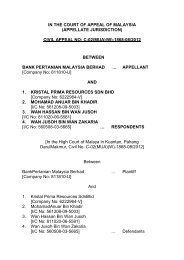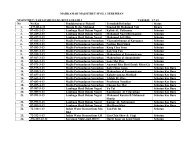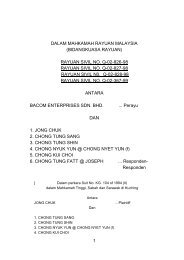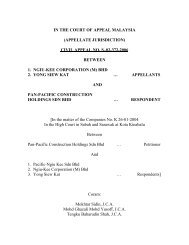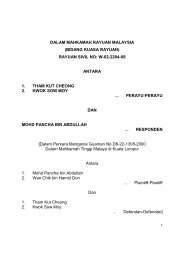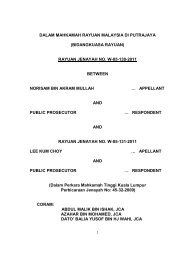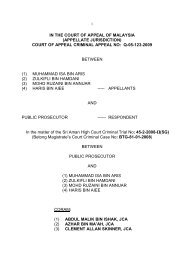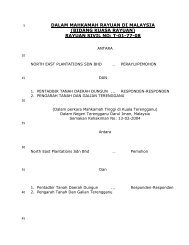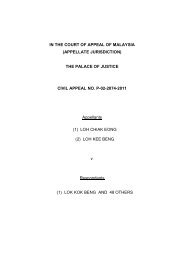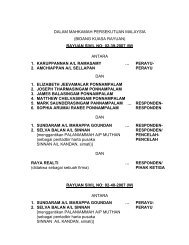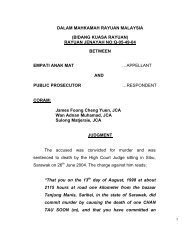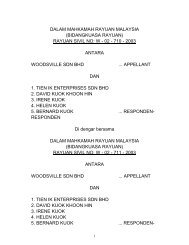DALAM MAHKAMAH RAYUAN MALAYSIA (BIDANG KUASA ...
DALAM MAHKAMAH RAYUAN MALAYSIA (BIDANG KUASA ...
DALAM MAHKAMAH RAYUAN MALAYSIA (BIDANG KUASA ...
Create successful ePaper yourself
Turn your PDF publications into a flip-book with our unique Google optimized e-Paper software.
24<br />
SP15 had planted it there was an incredible version bearing in mind that<br />
the appellant himself was a police Sergeant at the time of his arrest.<br />
[48] According to Lord Salmon in Director of Public Prosecutions<br />
v. Kilbourne [1973] AC 729, HL, circumstantial evidence “works by<br />
cumulatively, in geometrical progression, eliminating other<br />
possibilities”. In Bakshish Singh v. The State of Punjab [1971] AIR<br />
2016, 2018, SC, the Indian Supreme Court re-affirmed the principle when<br />
dealing with cases that relied on circumstantial evidence in these words:<br />
“In a case resting on circumstantial evidence, the circumstances put<br />
forward must be satisfactorily proved and those circumstances<br />
should be consistent only with the hypothesis of the guilt of the<br />
accused. Again those circumstances should be of a conclusive<br />
nature and tendency and they should be such as to exclude every<br />
hypothesis but the one proposed to be proved. In other words, there<br />
must be a chain of evidence so far complete as not to leave any<br />
reasonable ground for a conclusion consistent with the innocence of<br />
the accused and it must be such as to show that within all human<br />
probability the act must have been done by the accused.”<br />
[49] But Lord Normand in Lejzor Teper v. The Queen [1952] AC<br />
480, HL, at page 489 sounded a warning to the effect that, “It is also<br />
necessary before drawing the inference of the accused’s guilt from<br />
circumstantial evidence to be sure that there are no other co-existing<br />
circumstances which would weaken or destroy the inference”.<br />
[50] Where the prosecution relied on circumstantial evidence, the<br />
correct test for the Judge sitting alone to apply would be to follow the



